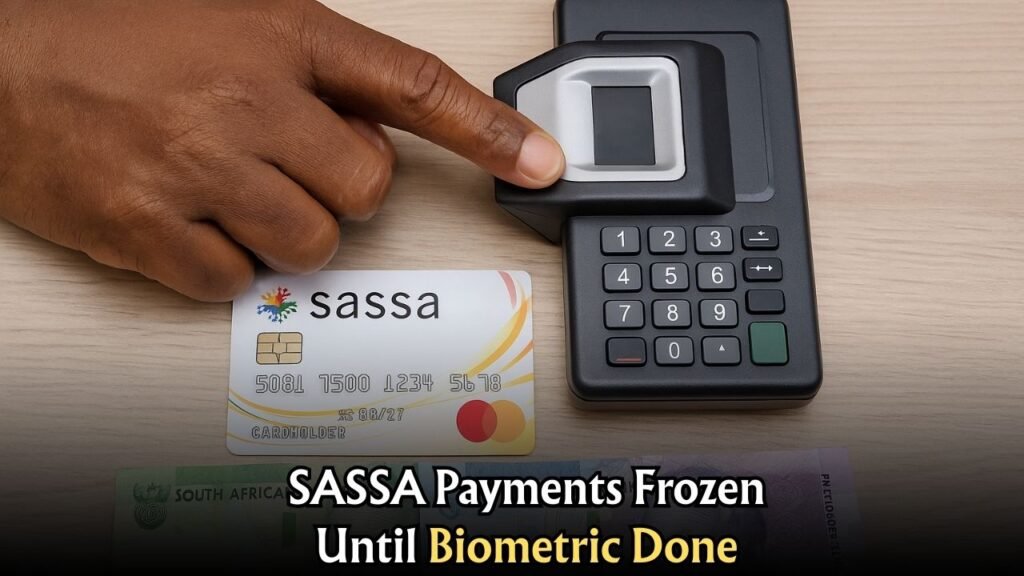SASSA Biometric Verification for September 2025 Grants: In a significant move to enhance security and efficiency, the South African Social Security Agency (SASSA) is implementing biometric verification for grant payments starting September 2025. This new measure will impact various grant amounts, including R2,315, R560, and R1,250, intended to ensure that the rightful beneficiaries receive their due payments. As the system rolls out, beneficiaries are expected to undergo biometric verification, which involves fingerprint scanning and facial recognition, to authenticate their identity. The shift aims to reduce instances of fraud and streamline the distribution process, ensuring that government funds reach those who need them the most. This initiative is part of SASSA’s ongoing efforts to modernize its payment systems and improve service delivery to millions of South Africans who rely on financial assistance.

Understanding the SASSA Biometric Verification Process
The introduction of biometric verification by SASSA marks a new era in social grant management. This cutting-edge technology involves using unique biological traits, such as fingerprints and facial features, to confirm the identity of beneficiaries. This step is crucial for preventing fraudulent claims and ensuring that the grants are directed to the correct recipients. The biometric data will be collected at various SASSA service points and verified against existing records at the time of payment. Beneficiaries will need to present themselves at designated centers for the initial registration and verification. This process will help in creating a comprehensive and secure database, minimizing the risk of identity theft and unauthorized access to funds. For many beneficiaries, particularly the elderly and those in rural areas, SASSA plans to offer assistance and support to facilitate a smooth transition to this new system.
Impact of Biometric Verification on Grant Payments
The implementation of biometric verification is set to have a significant impact on the distribution of grants such as the R2,315, R560, and R1,250 payments. By ensuring that only eligible recipients receive the grants, SASSA aims to enhance the integrity of the social security system. This measure will likely lead to a reduction in fraudulent activities, which have previously plagued the grant distribution process. Beneficiaries might experience some initial challenges as they adapt to the new system, but SASSA is committed to providing the necessary resources and support. The agency’s objective is to create a more transparent and efficient payment system that minimizes delays and errors. For the recipients, this means more reliable access to their grants, thereby improving their financial stability and overall quality of life.
Preparing for the Transition to Biometric Verification
With the September 2025 deadline approaching, beneficiaries are encouraged to prepare for the transition to biometric verification. It is important for grant recipients to stay informed about the registration process and understand the requirements. SASSA is expected to conduct awareness campaigns and provide detailed instructions to ensure a smooth transition. Beneficiaries should ensure that their personal information is up-to-date and accurate to avoid any complications during verification. Additionally, SASSA will likely set up mobile registration units and partner with local community centers to reach those in remote areas. This proactive approach will help address any logistical challenges and ensure that all beneficiaries are equipped to comply with the new verification process.
Long-term Benefits of SASSA’s Biometric Verification System
The long-term benefits of implementing biometric verification for SASSA grants extend beyond mere fraud prevention. This system promises to enhance the efficiency and reliability of the entire grant distribution process. By creating a centralized database of verified beneficiaries, SASSA can streamline operations and reduce administrative burdens. The accuracy of biometric verification ensures that funds are allocated correctly, thus optimizing resource allocation and reducing wastage. In the long run, this initiative could serve as a model for other social security systems across the continent, showcasing South Africa’s commitment to leveraging technology for social development. For beneficiaries, the enhanced security and reliability of the grant system mean improved financial security and, subsequently, a better quality of life. As SASSA continues to innovate, South Africans can look forward to a more equitable and efficient social welfare system.




